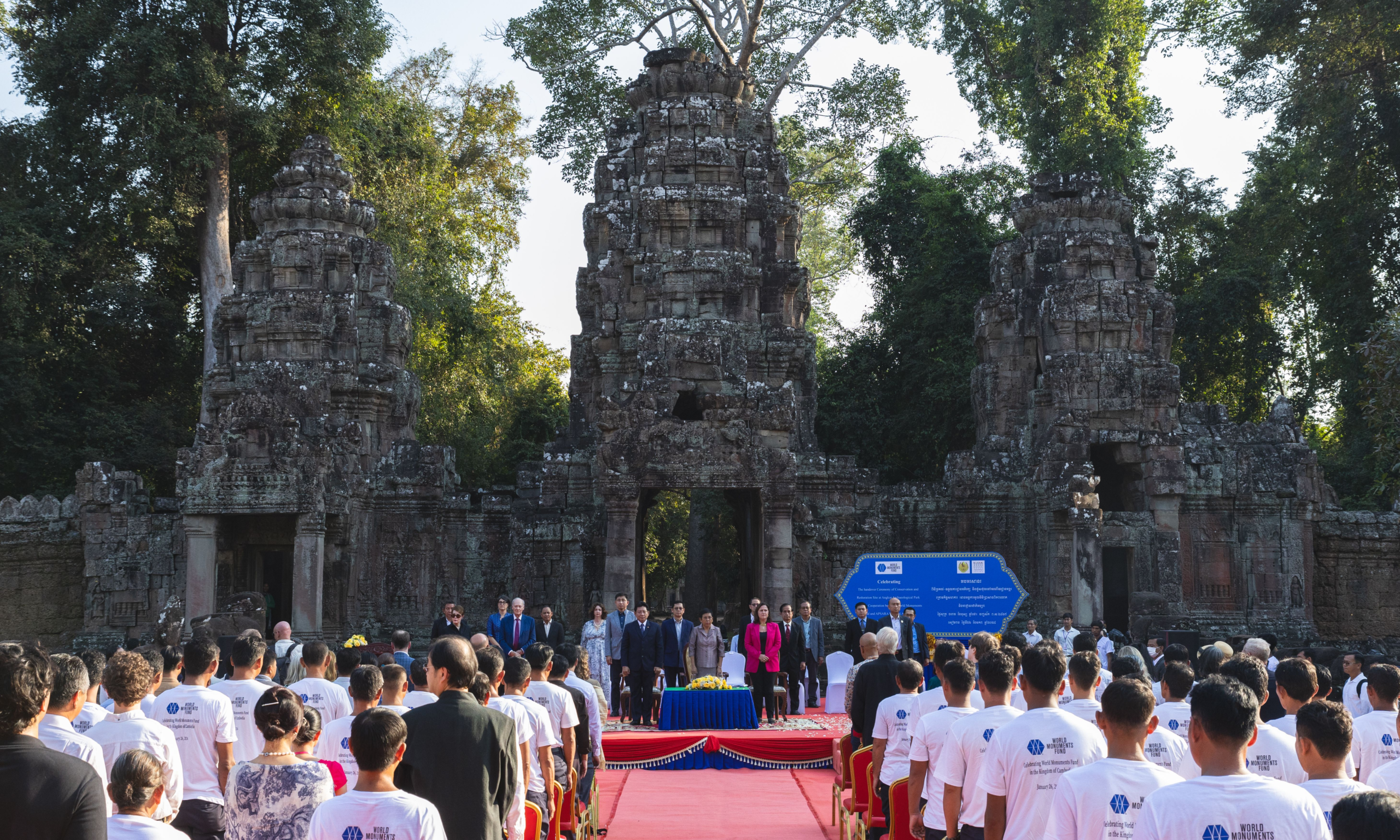The 26 January 2024 WMF handing-off ceremony Oyen Rodriguez
The World Monuments Fund (WMF) has handed over control of three preserved sites in the Angkor Archaeological Park to Cambodia's Authority for the Protection and Management of Angkor (Apsara). The transfer of site management became official on 31 January and was preceded by a hand-off ceremony on 26 January.
Apsara assumes maintenance responsibilities for these long-running projects as the WMF is also celebrating 35 years of conservation and “capacity-building” efforts at the park, ensuring the sustainability of efforts there for future generations. This new chapter for the Ta Som and Preah Khan Temples, alongside the Churning of the Ocean of Milk Gallery in Angkor Wat, coincides with a new phase of WMF conservation undertakings at Phnom Bakheng.
“This transition is a historic moment for Angkor,” Bénédicte de Montlaur, the president and chief executive of the World Monuments Fund, said in a statement. “At the beginning of this project in 1989, international intervention was necessary to help redevelop the conservation skills of local technicians in order to carry out necessary work. Over the years, reliance on international expertise has declined significantly across WMF projects at Angkor, and we are delighted to see Apsara reclaim full responsibility for day-to-day maintenance and future conservation work at these three sites.”
Angkor has been named one of the most important archaeological sites in Southeast Asia by Unesco, which inscribed it as a world heritage site in 1992. Stretching over 250 square miles, the park contains the majestic remains of the Khmer Empire, a 9th-to15th century Hindu-Buddhist regime that boasted some of the most advanced pre-industrial urban architecture on earth.
The Cambodian Civil War of the 1970s halted long-standing efforts to revitalize the relics at Angkor Park, and many heritage workers died or were forced to flee the country. This period, when the Khmer Rouge seized control of the country, also saw widespread looting of archaeological artefacts, which were trafficked out of the country and sold abroad; many such objects have been repatriated by museums and collectors in recent years.
WMF became involved with Angkor conservation endeavours in 1989 after a field mission to evaluate the temples. A partnership was formed with King Norodom Sihanouk to create a conservation and training programme, building on the efforts of the newly reopened Royal University of Fine Arts.
Apsara's establishment in 1995 and subsequent management improvements led to Angkor’s removal from the list of endangered heritage sites in 2004; since 1992, the WMF has allocated $14.6m towards the future preservation of the Siem Reap area, generating more than $20m in positive economic impacts and resident employment in the immediate community. The organisation is also developing a formal, standardised certification program to support the 100 full-time conservation technicians and mentees working in the region.
“Our impact has gone beyond physical conservation work conducted over 35 years,” said De Montlaur during the 26 January ceremony at Preah Khan Temple. “Our capacity-building work has provided skills, income and stability to the local team, which is now led by a majoritarian Cambodian leadership team. We also have developed tourism management strategies to enrich the visitor experience and prevent the harms of overtourism to the sites. WMF’s work will continue at the Archaeological Park with the restoration of Phnom Bakheng and the creation of new education programmes in cooperation with the Cambodian authorities.”

